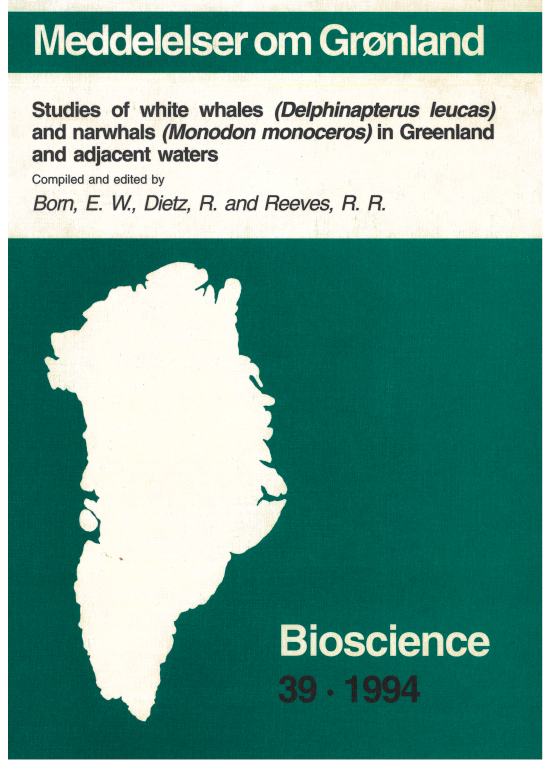PCB's and other organochlorine contaminants in white whales (Delphinapterus leucas) from West Greenland: variations with age and sex
DOI:
https://doi.org/10.7146/mogbiosci.v39.142555Abstract
Blubber samples from 138 white whales from two locations in West Greenland (the Nuussuaq area, ea. 74°N, 58°W, and the Disko Bugt area, ea. 69°N, 53°W and skin and kidney samples from 20 white whales from Nuussuaq were analysed for PCB congeners and related organochlorines (hexachlorohexanes (ΣHCH), chlorinated bornanes (ΣCHB), chlordane (ΣCHLORD), DDT-related compounds (ΣDDT), dieldrin and mirex). The large sample size permitted a detailed assessment of the variation of contaminant levels with age and sex. Mean concentrations of all major organochlorine (OC) groups (ΣPCB, lDDT, ΣCHLORD, ΣCHB) were not significantly different between the Nuussuaq and Disko Bugt groups.
After an age of 5.5 years, a consistent decline in concentration levels of all four major OC's was observed in females. In contrast, only marginal differences in ΣPCB, ΣCHB and ΣCHLORD concentrations and a substantial increase in ΣDDT were observed in males. The observed decline in females occurred near the age of attainment of sexual maturity and preceding commencement of lactation. Residue levels in sexually immature animals (male and female) and male-female differences in mean concentrations of ΣPCB and p,p' -ODE in adult animals are consistent with a lactation period of less than one year. Young animals could be distinguished from adults, using principal component analysis, by higher proportions of lower chlorinated PCB's and more water soluble OC's such as p,p'-DDE which are preferentially transferred during lactation.

Downloads
Published
Issue
Section
License
Coypyright by the authors and the Commision for Scientific Research in Greenland / Danish Polar Center/Museum Tusculanum Press as indicated in the individual volumes. No parts of the publications may be reproduced in any form without the written permission by the copyright owners.

